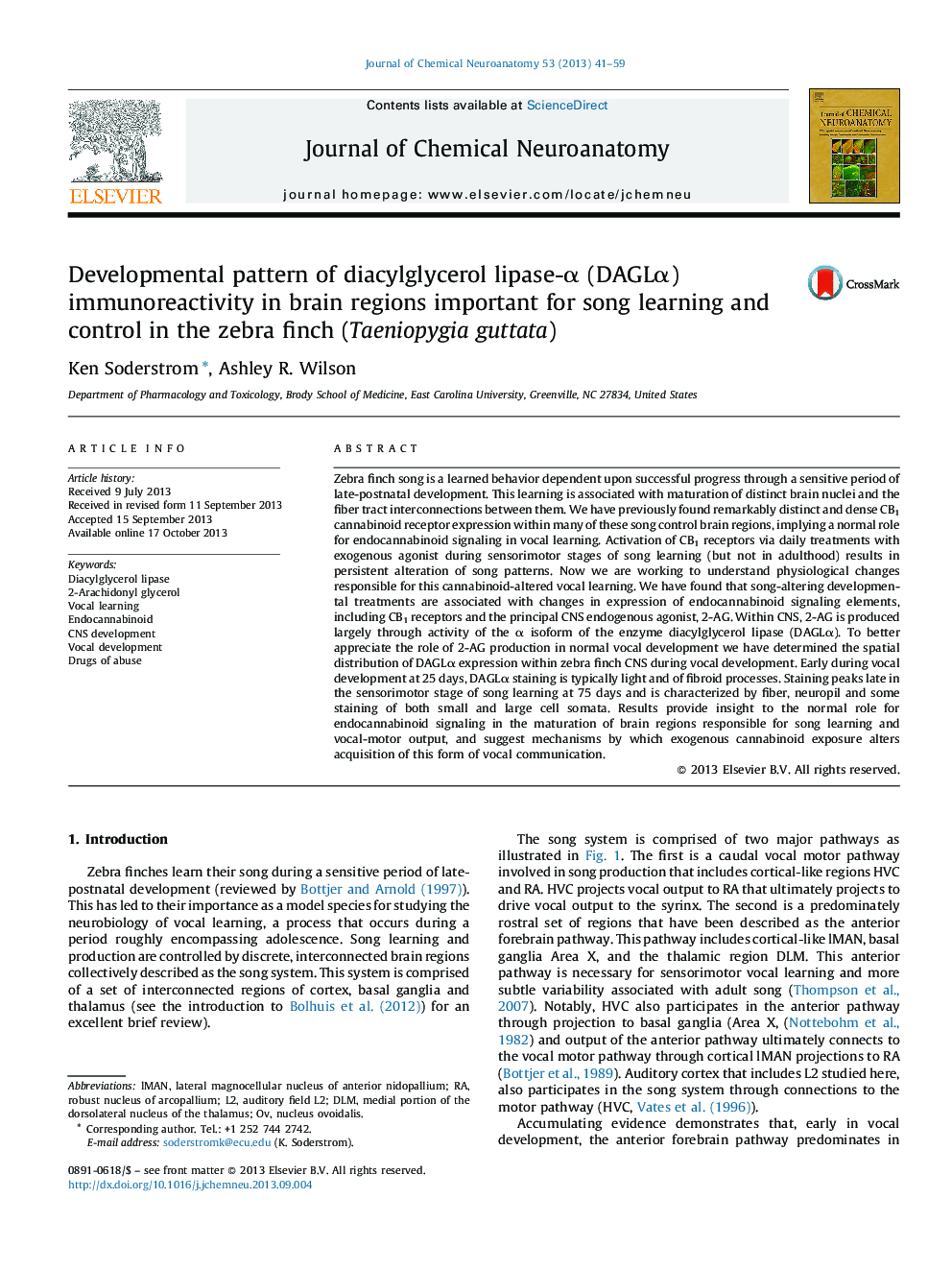| کد مقاله | کد نشریه | سال انتشار | مقاله انگلیسی | نسخه تمام متن |
|---|---|---|---|---|
| 1988878 | 1540462 | 2013 | 19 صفحه PDF | دانلود رایگان |
عنوان انگلیسی مقاله ISI
Developmental pattern of diacylglycerol lipase-α (DAGLα) immunoreactivity in brain regions important for song learning and control in the zebra finch (Taeniopygia guttata)
دانلود مقاله + سفارش ترجمه
دانلود مقاله ISI انگلیسی
رایگان برای ایرانیان
کلمات کلیدی
موضوعات مرتبط
علوم زیستی و بیوفناوری
بیوشیمی، ژنتیک و زیست شناسی مولکولی
زیست شیمی
پیش نمایش صفحه اول مقاله

چکیده انگلیسی
Zebra finch song is a learned behavior dependent upon successful progress through a sensitive period of late-postnatal development. This learning is associated with maturation of distinct brain nuclei and the fiber tract interconnections between them. We have previously found remarkably distinct and dense CB1 cannabinoid receptor expression within many of these song control brain regions, implying a normal role for endocannabinoid signaling in vocal learning. Activation of CB1 receptors via daily treatments with exogenous agonist during sensorimotor stages of song learning (but not in adulthood) results in persistent alteration of song patterns. Now we are working to understand physiological changes responsible for this cannabinoid-altered vocal learning. We have found that song-altering developmental treatments are associated with changes in expression of endocannabinoid signaling elements, including CB1 receptors and the principal CNS endogenous agonist, 2-AG. Within CNS, 2-AG is produced largely through activity of the α isoform of the enzyme diacylglycerol lipase (DAGLα). To better appreciate the role of 2-AG production in normal vocal development we have determined the spatial distribution of DAGLα expression within zebra finch CNS during vocal development. Early during vocal development at 25 days, DAGLα staining is typically light and of fibroid processes. Staining peaks late in the sensorimotor stage of song learning at 75 days and is characterized by fiber, neuropil and some staining of both small and large cell somata. Results provide insight to the normal role for endocannabinoid signaling in the maturation of brain regions responsible for song learning and vocal-motor output, and suggest mechanisms by which exogenous cannabinoid exposure alters acquisition of this form of vocal communication.
ناشر
Database: Elsevier - ScienceDirect (ساینس دایرکت)
Journal: Journal of Chemical Neuroanatomy - Volume 53, November 2013, Pages 41-59
Journal: Journal of Chemical Neuroanatomy - Volume 53, November 2013, Pages 41-59
نویسندگان
Ken Soderstrom, Ashley R. Wilson,